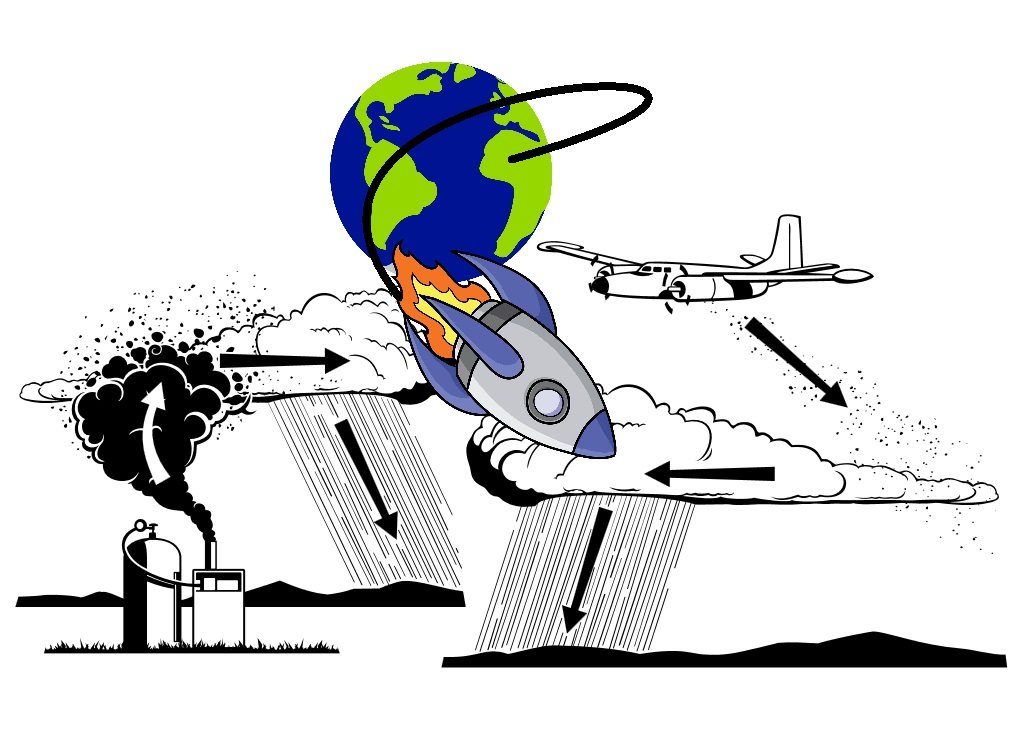Can we fix it? A sampler of the more extreme ideas for solving climate change

Carbon sequestration
A fancy name for storing carbon dioxide. This can be done with urban forests (think trees on top of buildings), in massive peat bogs, deep in the ground, or even seaweed in the ocean.
Can it be done? Yes. So why isn’t everyone doing it? The cost, as carbon sequestration could result in increased energy costs of one to five US cents per kilowatt hour of power produced. It may not seem like a lot, but it adds up. A lot.
Spraying sulphur particles into the atmosphere
What it’s not: “chemtrails” (sorry, conspiracy theorists who think the stuff that trails jets flying in the sky is used for CIA-backed mind control programmes or turning frogs gay). What it is: a bold plan to potentially reflect more heat back into space, reducing the effects of global warming.
When volcanos erupt, they spew tens of millions of tonnes of sulfur dioxide into the air, which disperses across the sky and can lower temperatures worldwide for months. For example, when Mt St Helens erupted in the US state of Washington in May 1980, it led to a “year without a summer” in the Northern Hemisphere and lowered global temperatures by about 0.1 degrees Celsius.
This year, Harvard professors David Keith and Frank Keutsch hope to launch a high-altitude balloon, tethered to a gondola equipped with propellers and sensors, from a site in Tucson, Arizona. After initial engineering tests, the “StratoCruiser” would spray a fine mist of materials such as sulfur dioxide, alumina, or calcium carbonate into the stratosphere. The sensors would then measure the reflectivity of the particles, the degree to which they disperse or coalesce, and the way they interact with other compounds in the atmosphere. In other words, they hope to be able to recreate the cooling effects of volcanos, without the danger of super-hot ash and other fine particles falling from the sky and causing serious harm.
Cool stuff, yes?
Cloud-seeding
One of the more sci-fi solutions isn’t actually so sci-fi at all – it’s been around since at least the 19th century. Wayyyyyyy back in 1891, German-American engineer Louis Gathmann theorised that shooting liquid carbon dioxide into clouds – whether by an artillery shell or a balloon filled wiith the stuff – could create rain. He got a patent for it, too, and wrote a book about his ideas called Rain Produced At Will.
After surviving the Blitz in World War II, some folks in the UK government thought cloud-seeding would be a good way to be prepared in case another enemy attempted to conduct air raids on British cities. You can’t easily fly through a torrential downpour, right? Surprisingly, the experiments – dubbed Operation Cumulus – worked too well, and with terrible consequences. On August 15, 1952, an estimated 90 million tonnes of water coursed through the town of Lynmouth, near where cloud-seeding experiments were being carried out. Trees were uprooted, boulders were carried away by the current, buildings were destroyed, and people were swept out to sea. Thirty-five people were killed. The British military maintains it was not carrying out cloud-seeding experiments in that area on that day.
During the Cold War, the US and Soviet Union both poured large amounts of money into research into cloud-seeding as a way to gain a tactical advantage. No surprises there, right?
China also got in on the action – and today actually uses cloud-seeding to help bring moisture to arid regions. The country fires silver iodide rockets into the sky where rain is desired. In February 2009, silver iodide rockets were fired over Beijing to artificially induce snowfall after four months of drought. The snowfall lasted for about three days and led to the closure of 12 main roads. Other countries that also use cloud-seeding for peaceful purposes include India, Kuwait, the United Arab Emirates, Germany, and even Australia.
Sum: this seems to work.
Space sunshades
Think a giant umbrella to shield Earth from the Sun’s rays. The idea would be to reduce radiation from the Sun, which would reduce insolation and – in turn – reduce heating. First proposed by James Early in 1989, you’d still need a material that would allow some light to get through, to avoid large patches of artificial darkness on the Earth’s surface (which, of course, would be disastrous for ecosystems and crops, not to mention psychologically distressing for humans).

The obvious issues with this, of course, are the cost, and the challenge of getting the thing into space and assembling it (depending on its size). Then there’s this concern: what if it were turned into a weapon? Anyone who’s seen the James Bond films Goldeneye or Die Another Day knows why that’s very, very bad.
Luxury bolt-holes
Worst comes to worst, you could always pull a Peter Thiel and go full prepper with a subterranean palace to live out your days while the rest of humanity literally bites the dust.
Flee the planet
Perhaps the most extreme option of all. But lots of folks (here’s looking at you, Elon Musk) are looking at ways of doing this very thing in the future. Just don’t repeat the same mistakes on the next planet, too. Don’t want to give humanity an intergalactic reputation as a bunch of environmental malefactors.





